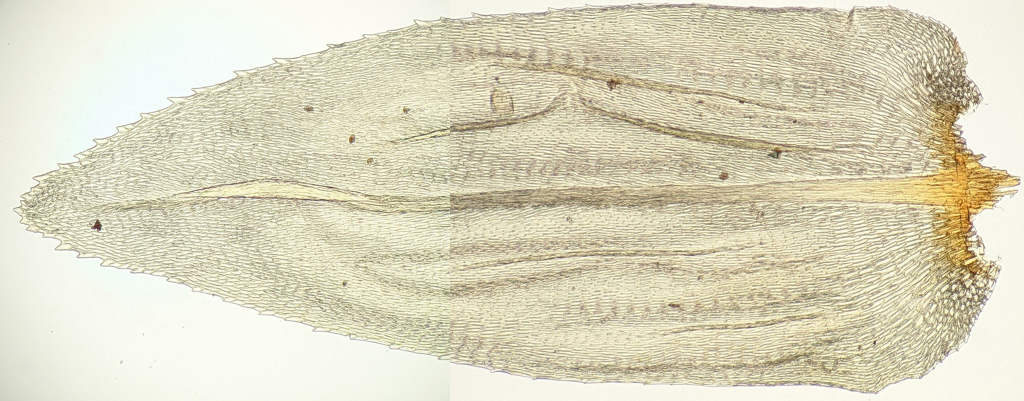Climacium dendroides
(Hedw.) F.Weber & D.MohrLoose tufts or cushions on soil, pale to yellow-green. Secondary stems 3–7 (–10) cm tall, pale brown, simple or with branches 10–20 mm long, tomentose; rhizoids brown on stipes becoming yellow toward branch apices. Stipe leaves erect-appressed when moist or dry, ovate, 2–3 mm long, 1.5–2.1 mm wide, somewhat concave, ±plicate; costae extending to c. 5–8 cells below apex, often ending in a single abaxial tooth; bases cordate; apices obtuse and apiculate; margins entire, serrulate near apex; cells fusiform, mostly 31–60 μm long, 4–6 μm wide, to 80 μm long at base; alar cells rectangular to subquadrate, some often hyaline and inflated. Branch leaves ovate to oblong, erect-spreading when moist, little altered when dry, ovate to oblong, 2–2.8 mm long, 0.9–1.4 mm wide, somewhat concave, plicate; costae extending to c. 5–8 cells below apex, often ending in a single abaxial tooth; bases auriculate; apices acute to obtuse; margins serrulate to serrate, more prominent towards apices; cells fusiform, mostly 31–60 μm long, 4–6 μm wide, to 80 μm long at base; alar cells rhomboid in auricles, rectangular to subquadrate near insertion with some often hyaline and inflated, 25–90 μm long, 6–40 μm wide. Setae 25–35 mm long, reddish-brown, smooth. Capsules oblong-cylindric, erect, straight, 1.5–3 (–4) mm long. Operculum rostrate from conic base, c. 0.8–1.2 mm long.
HSF, VAlp. Rare in Victoria where only known from alpine bogs and creeks in the Dargo and Bogong High Plains. Also Tas. New Zealand, Europe, Asia and North America.
 Spinning
SpinningHorton, D.G.; Vitt, D.H. (1976). Morphological characters, relative to distribution, and taxonomic considerations of the genus Climacium in North America. Canadian Journal of Botany 54: 1872–1883.


